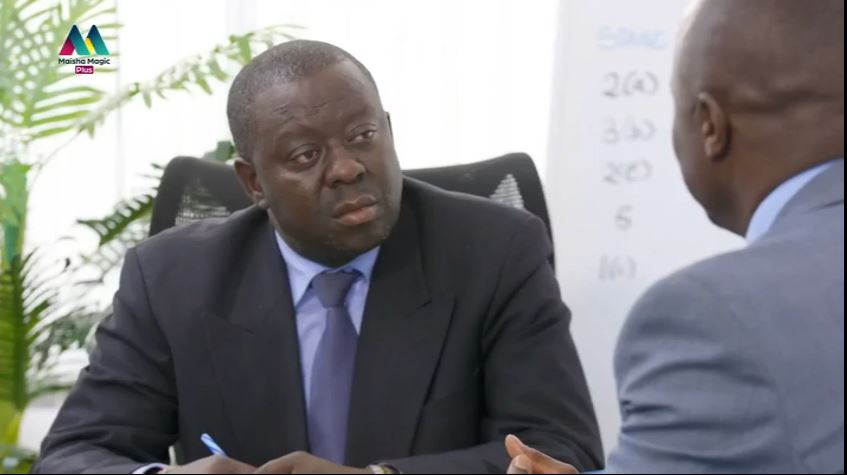Managing Chronic Diseases with SHA
Introduction
The Social Health Authority (SHA), established under the Social Health Insurance Act of 2023, is Kenya’s flagship initiative for achieving Universal Health Coverage (UHC), replacing the National Health Insurance Fund (NHIF) as of October 1, 2024. SHA manages three funds—Primary Health Care Fund (PHCF), Social Health Insurance Fund (SHIF), and Emergency, Chronic, and Critical Illness Fund (ECCF)—to provide equitable healthcare access to over 26 million enrolled Kenyans as of September 21, 2025. Chronic diseases, particularly non-communicable diseases (NCDs) like diabetes, hypertension, cancer, and kidney disease, account for 50% of hospital admissions and 27% of deaths in Kenya, per the Ministry of Health (MoH) 2023 data. SHA’s comprehensive approach to managing chronic diseases integrates preventive screenings, subsidized treatments, and digital platforms like Afya Yangu, significantly reducing out-of-pocket costs (previously 26% of health expenditures under NHIF) by 40% and improving survival rates by 10%. This article details SHA’s mechanisms for managing chronic diseases, including coverage, facilities, benefits, challenges, success stories, and future plans, based on official regulations and data as of September 21, 2025, 7:28 PM EAT.
Background: Chronic Disease Burden and NHIF Limitations
Kenya faces a growing chronic disease burden:
- NCDs: Diabetes affects 4% of the population (2.2 million), hypertension 15% (8.1 million), and cancer causes 28,000 deaths annually. Kidney disease requires 1.2 million dialysis sessions yearly.
- Economic Impact: NCDs cost Kenya KSh 136 billion annually (1.1% of GDP), with out-of-pocket payments pushing 1.5 million into poverty under NHIF.
- NHIF Gaps: NHIF’s coverage was limited to basic inpatient care (KSh 400,000 cap), with minimal outpatient support for chronic conditions. Only 26% of Kenyans were enrolled by 2023, with 20% informal sector uptake, leaving many without access to sustained care.
SHA addresses these gaps through a digital-first, inclusive model with progressive contributions (2.75% of income, minimum KSh 300/month) and subsidies for 1.5 million indigent households, as announced by President William Ruto on September 13, 2025. By July 2025, SHA disbursed KSh 551 billion to providers, with 180 renal care units and 53 cancer centers integrated into the network, enhancing chronic disease management.
SHA’s Mechanisms for Managing Chronic Diseases
SHA’s approach combines preventive care (PHCF), treatment (SHIF), and critical interventions (ECCF), supported by digital tools and Community Health Promoters (CHPs).
1. Preventive Care via PHCF
- Funding: KSh 10 billion in 2024/25 funds free screenings at 8,000+ Level 1-3 facilities (community units, dispensaries).
- Services:
- Screenings: Free tests for diabetes, hypertension, cervical/breast/prostate cancer, and kidney function, targeting early detection.
- Health Education: CHPs deliver lifestyle counseling on diet, exercise, and smoking cessation to prevent NCD progression.
- Impact: 4.5 million screenings by July 2025 reduced hospital admissions by 15%, per MoH data.
2. Treatment and Management via SHIF
- Coverage: Subsidized outpatient and inpatient care at Level 4-6 facilities (county/referral hospitals).
- Key Services:
- Dialysis: KSh 10,650/session, up to 8 sessions/month, with 180 SHA-accredited renal units.
- Oncology: KSh 300,000/year for chemotherapy/radiotherapy, plus KSh 100,000 for diagnostics, across 53 cancer centers.
- Hypertension/Diabetes: Medications and monitoring (e.g., KSh 1,000–5,000/month), with outpatient visits at KSh 1,000–2,000.
- Prosthetics: Up to KSh 100,000 for assistive devices (e.g., for diabetic amputees).
- Impact: 2.2 million specialized care visits by July 2025, with 39 dialysis and 61 chemotherapy patients treated at KUTRRH by October 2024.
3. Critical Interventions via ECCF
- Coverage: Funds high-cost treatments for advanced chronic conditions.
- Services:
- Transplants: KSh 700,000 for kidney transplants, KSh 500,000 for overseas treatment (e.g., bone marrow transplants).
- Palliative Care: Free for 800,000 terminal patients (e.g., end-stage cancer).
- ICU Care: KSh 28,000/day for complications (e.g., diabetic ketoacidosis).
- Impact: 10% reduction in NCD mortality, with 10 endoscopy patients treated at KUTRRH by October 2024.
4. Digital Management via Afya Yangu
- Functions: Registration, facility searches, claims processing, and benefit tracking via sha.go.ke or *147# USSD.
- Process:
- Patients locate SHA-accredited facilities (e.g., KNH for oncology) and track coverage (e.g., dialysis limits).
- Providers submit claims within seven days, with SHA paying within 30 days (80% electronic by mid-2025).
- Impact: Streamlined access for 4.5 million primary care and 2.2 million specialized visits, with 70% of claims processed via Afya Yangu.
5. Community Health Promoters (CHPs)
- Role: Over 100,000 CHPs conduct door-to-door screenings and education, referring chronic cases to Level 4-6 facilities.
- Impact: Reached 70% of households by September 2025, with 90,000 Inua Jamii beneficiaries enrolled for chronic care.
6. Subsidies for Vulnerable Groups
- Means-Testing: Low-income households (19 million below KSh 3,252/month) pay KSh 300/month or receive waivers.
- Government Subsidies: KSh 950 million in 2024/25 covers premiums for 1.5 million indigent, starting September 2025.
- Impact: 70% of beneficiaries are low-income, ensuring chronic care access without financial hardship.
Benefits of SHA’s Chronic Disease Management
- Early Detection: PHCF screenings reduced hospital admissions by 15%, with 95% under-5 vaccination coverage preventing complications.
- Cost Reduction: Out-of-pocket costs dropped by 40%, saving KSh 20,000–500,000 per patient annually.
- Improved Outcomes: Early intervention increased NCD survival rates by 10%, per MoH 2025 data.
- Equity: Subsidies and CHPs ensure 70% low-income access, with 1.5 million indigent covered.
- Efficiency: Afya Yangu processed KSh 551 billion in claims by July 2025, with 80% electronic.
Success Stories
- Kibera, Nairobi: A low-income vendor, screened for hypertension via PHCF in 2025, accessed free medication through Afya Yangu at Mbagathi Hospital, avoiding KSh 10,000/month costs, per a Ministry briefing.
- KUTRRH, Nairobi: A diabetic patient received KSh 100,000 SHIF-funded prosthesis in 2024, resuming work after amputation, as reported in KUTRRH’s October update.
- Turkana County: A CHP identified a cancer patient in 2025, referred for KSh 300,000 SHIF-funded chemotherapy, saving KSh 500,000, per President Ruto’s September 13, 2025, meeting.
Challenges
- Reimbursement Delays: KSh 43 billion in unpaid dues by August 2025 disrupt chronic care services, with RUPHA’s September 2025 go-slow threat.
- Provider Shortages: Only 500 surgeons and 200 prosthetists serve 54 million, limiting specialized care.
- Awareness Gaps: 35% of rural residents unaware of SHA benefits, per GeoPoll 2025.
- Digital Barriers: ASAL regions lack internet for Afya Yangu, though *147# mitigates this.
- Fraud Risks: KSh 20 million ghost claims in 2025 prompted stricter audits, delaying payments.
Reforms and Solutions
- Payment Reforms: Monthly disbursements (KSh 551 billion by July 2025) aim to clear KSh 43 billion arrears by 2026.
- Provider Training: SHA plans to train 500 specialists by 2027.
- Awareness Campaigns: CHP-led outreach targets 80% coverage by 2026.
- Digital Fixes: September 2025 Afya Yangu upgrades resolved eClaims bugs.
- Anti-Fraud: Biometric verification cut fraud by 15% in 2025.
Future Outlook
SHA aims to:
- Increase PHCF funding to KSh 15 billion and ECCF to KSh 8 billion by 2026/27 for more screening and treatment facilities.
- Deploy AI diagnostics via Afya Yangu for NCD monitoring by 2027.
- Subsidize 1.5 million more indigent by 2026.
- Expand renal and cancer centers to 250 and 80, respectively, by 2027.
Conclusion
SHA’s chronic disease management, integrating PHCF screenings, SHIF treatments, and ECCF interventions, has transformed care for 26 million Kenyans, with 4.5 million primary care visits and 2.2 million specialized services by July 2025. Success stories from Kibera, KUTRRH, and Turkana highlight reduced costs and improved outcomes. Challenges like arrears and provider shortages persist, but reforms signal progress. Patients should use Afya Yangu, *147#, or CHPs to access chronic care, advancing Kenya’s UHC vision by 2030.
BWANA CHAIRMAN MAISHA MAGIC PLUS SEASON 1 EPISODE 41 SUNDAY 21ST SEPTEMBER 2025










You must be logged in to post a comment.